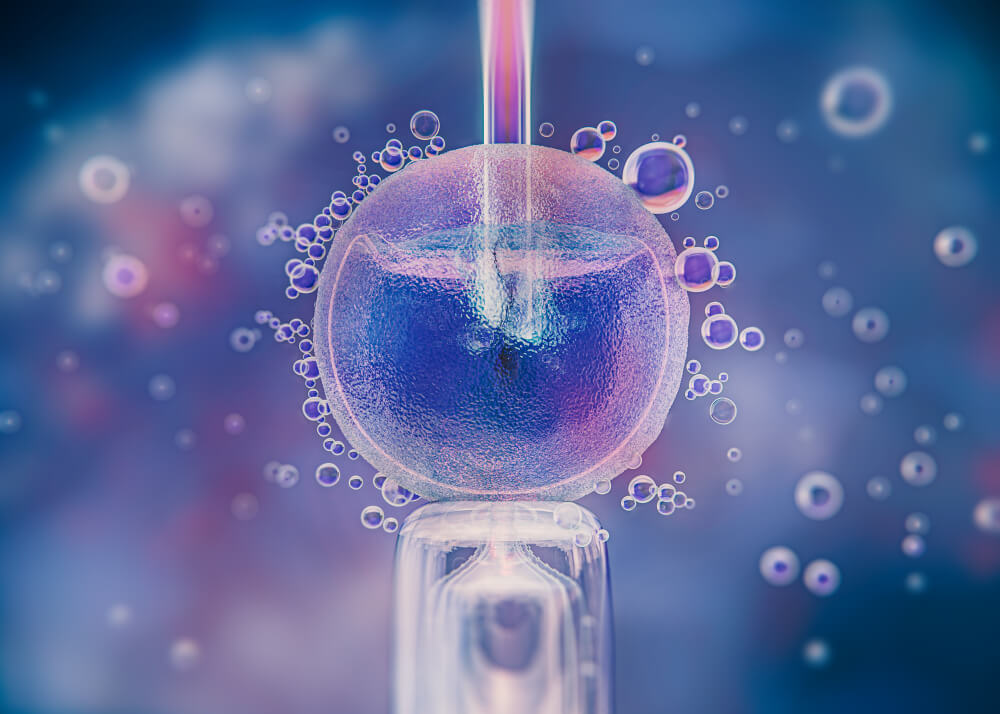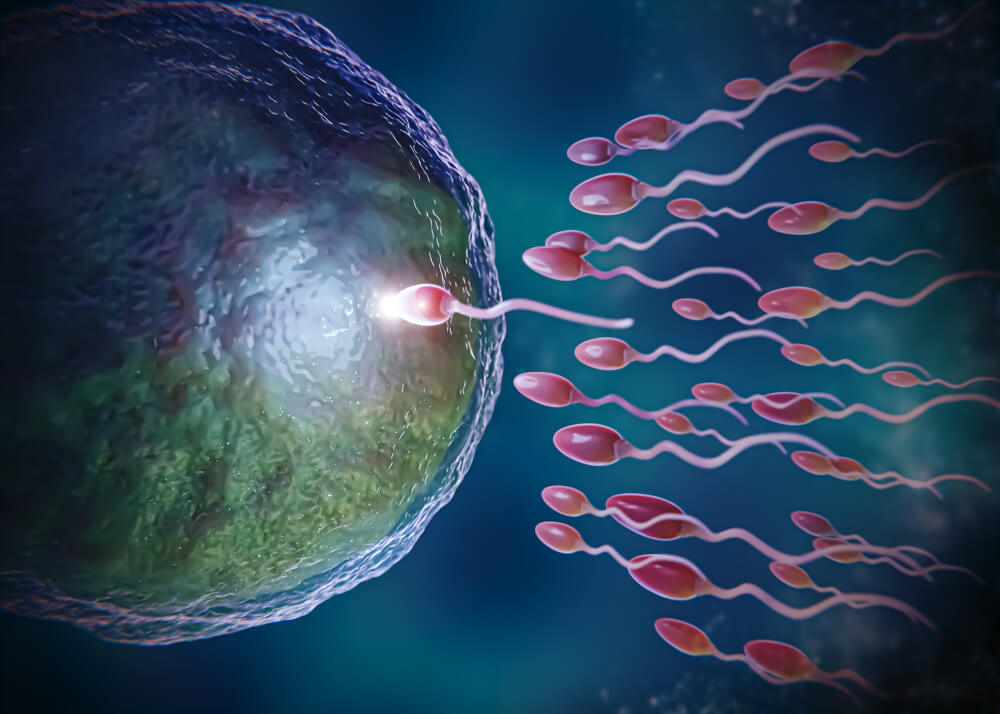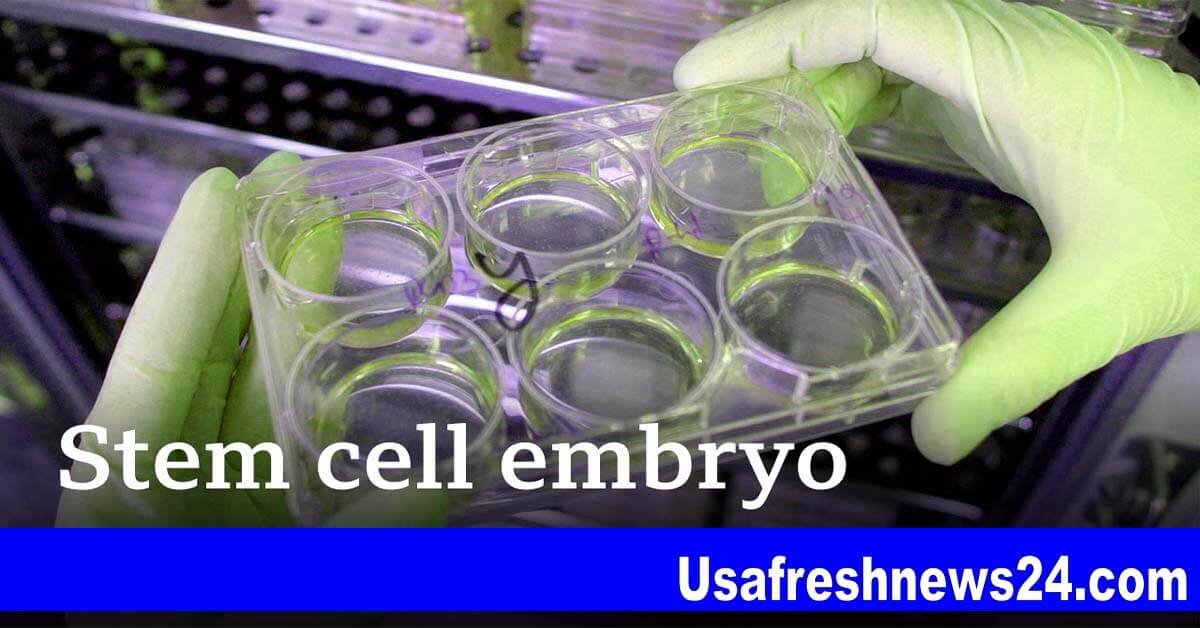scientists have grown something that closely resembles an early human embryo without using sperm eggs or a womb the aim of these embryo models is to provide an ethical way of studying how stem cells form organs our health and science correspondent James Gallagher has more this is a field that’s been progressing rapidly.

designed by freepik
Now reached a significant moment take a second to think how remarkable it is that our lives start out like this a single sperm fertilizing a single egg but the first steps on the journey from this to us are poorly understood and researching embryos is legally ethically and technically fraught so this is where embryo models come in and this is how it’s done so there are no sperm or eggs involved instead scientists start with human stem cells these have the potential to become any type of tissue in our body these are then transformed into the four types of cell you’d find in an embryo that was just one week old then 120 of them are mixed together and they start off as a jumble but as they grow this happens they start to organize themselves mimicking what a real embryo would look like 14 days after fertilization and this might appear confusing I admit but we can spot some things in here the purple cells around the outside are the ones that will grow to form the placenta and as we go inside the yellow cells would create a yolk sac and the blue ones would form in a real embryo a human being now of course this isn’t a real embryo it’s not possible to put this in the womb and make a baby but it is similar it even released hormones that made a pregnancy test turn positive in the lab and that’s what’s exciting the research team in Israel, this does look like textbook and uh and and the structures are there and it looks really really good this is a stem cell derived entity that has all the cell types all the compartments are known and in the right orientation which hasn’t been done before those struggling to start a family this research May one day help it could lead to new ideas for tackling infertility or improving IVF and that’s because these embryo models allow scientists to perform research that will be impossible on real embryos to understand the crucial early moments of our development when miscarriage and birth defects often arise so it’s a fascinating issue to speak to Roger sturmi professor in Reproductive Medicine at Hull your medical school, some of the kind of ethical risks in a moment first though I want to come to the potential uses let’s start with IVF because that’s what we were just hearing just there how can this kind of advancement actually be used practically so I think it’s important to understand where IVF struggles and where it fails and one of the major bottlenecks in IVF is the ability for an embryo after it is transferred into the womb to initiate a pregnancy and undergo a process called implantation and it’s a process that we do not have a lot of information about and these models these stem cell based embryo models offer us an opportunity to understand how the cells of the embryo interact with the cells of the the woo to try and help understand what might cause implantation failure so a potential Avenue for research let’s look at the ethical concerns are there any in your mind what what are the kind of arguments well I think the important thing to say is that there is active dialogue going on at the moment in the research Community but also more widely there’s a project which ,that’s involving legal Scholars bioethicists and funders within the UK to understand what some of the questions are about working with these models and how we can govern their use for a responsible manner I would imagine the concerns that most people would have is the potential of these models do they have the potential to ever form an offspring and I think we can say that at the moment there is no evidence at all to indicate that these models do have that potential and more importantly there are already um Regular but there is already a Prohibition in place to prevent these models from ever being transferred into the uterus of a human or an animal so it is important to reassure people that at the moment these there is no evidence that these have full developmental potential how surprised were you with the overall results obviously many people are very impressed many people are welcoming them but the idea that you can nudge these cells and then they do go on to form like this kind of replica of a human embryo it just sounds extraordinary and it is and I think it points to the remarkable capacity that the cells have to self-organize it is worth pointing out that is this work is incredibly impressive but the efficiency was quite low and so not all of the models were able to form in the way that we would expect or we might hope they would it also Builds on a long body of research by this research group at the vitamin institutes and others and so it is the next logical step from where we’ve been going over the past five to ten years remarkable and just finally how long do you think we go from something like this where we get the results and and however extraordinary they are until we actually start seeing any potential benefit from it well I think we’re seeing benefit immediately we’re seeing benefit in understanding how these solves organize and that helps us to start to unlock how the early embryo forms remember this is a model so it is only looking at it from a model point of view but we’re gaining new knowledge all the time and then we’re able to apply that knowledge to our to advance our understanding right now it is a remarkable achievement .
 designed by freepik
designed by freepik




